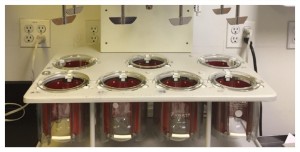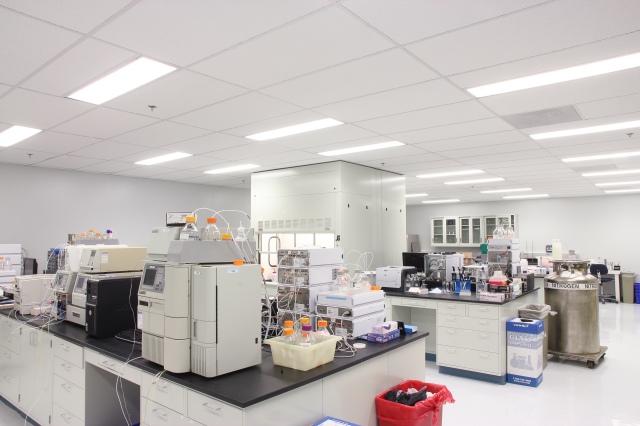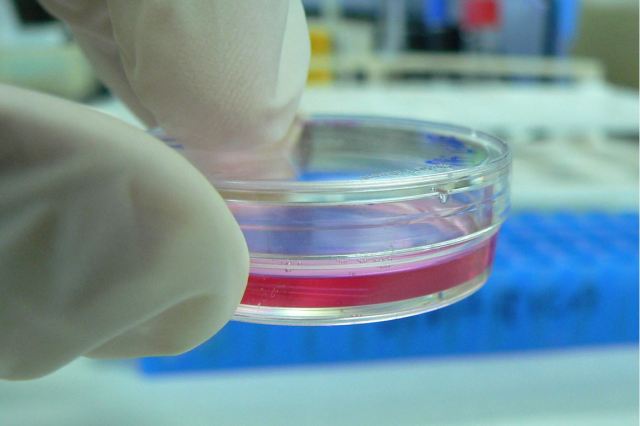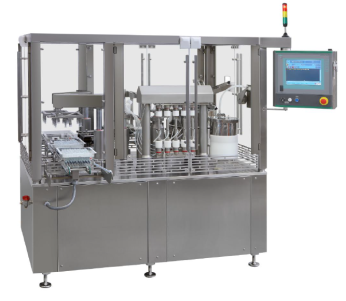Lonna Gordon
Senior Engineer
IPS-Integrated Project Services, LLC

In October of 2011 in a presentation on real-time release testing (RTRT)[1], the FDA gave an example of how a multivariate model could create a surrogate for dissolution testing of tablets. This example has been repeated in nearly all FDA presentations on RTRT and continuous manufacturing for OSD since.
As the pharmaceutical industry seeks to improve efficiency and decrease work-in-progress (WIP), RTRT is an important way to do so. Currently, tablets must undergo a rigorous series of end-product tests when they come off the press to prove that they have the correct ingredients in the correct ratios and will perform as expected in the patient. Eliminating these tests would mean tablets could go directly from the coater to the packaging line without delay. This would reduce WIP, storage, and production time.
There are a number of end-product tests that could be eliminated by on-line process analytical technology (PAT) measurements. The fact that the FDA chose to emphasize dissolution testing is an interesting one.
Dissolution testing is not an industry favorite. It takes a long time, it doesn’t always correlate to in-vivo dissolution[2], and some testing apparatus have been accused of unreliable and inconsistent results[3]. If there’s a list of tests that QC labs would like to replace, dissolution would be near the top.
Dissolution describes how long it takes a tablet to dissolve in an in-vitro bath, as a way of predicting its in-vivo release profile. The dissolution test is heavily dependent on hydrodynamics, and performance varies between testing apparatus. A testing method and parameters must therefore be selected first and then a product profile created. API properties such as pKa, stability, solubility as a function of pH, particle size, and polymorphism are evaluated as part of the profile development.
Although the FDA has been pushing modeling for dissolution for close to a decade, reality has lagged. In order to access RTRT for dissolution, the most important properties need to be linked to process or product characteristics that can be measured on-line, in-line, or at-line using available PAT. There are many variables that could contribute to the rate of dissolution, some easier to measure than others. The sheer complexity of study required has dragged out the timeline for meaningful results. Meanwhile, leaders in continuous manufacturing have busied themselves with the many far more fascinating (and less frustrating) challenges inherent in breaking ground in a new field.
This is why it was big news when Doug Hausner, Associate Director of the Rutgers Center for Structured Organic Particulate Systems (C-SOPS), announced in 2017 that they had developed a dissolution model for Janssen’s Prezista, being produced by continuous OSD manufacturing in Gurabo, Puerto Rico. The post-approval change request was filed with the FDA to great anticipation. It was approved a few months ago, making Prezista the first product that can be released without end-product testing for ID, assay, and dissolution. This was one small step for Prezista, one giant proof-of-concept for the industry.
Around the same time, the FDA released a draft guidance entitled “Quality Considerations for Continuous Manufacturing,[4]” a non-binding compilation of the FDA’s thoughts on quality control for continuous OSD. Once again, “a multivariate model to predict dissolution” was cited as a real-time release benefit of a robust PAT model.
But this time, it was less a statement of potential, and more a statement of reality.
[1] “Regulatory Perspective on Real Time Release Testing,” Moore, Christine M. V. 27 Oct 2011.
[2] “Moving Toward Real Time Release Testing,” Shanely, Agnes. Pharmaceutical Technology. 02 July 2017
[3] “Hydrodynamics-Induced Variability in the USP Apparatus II Dissolution Test,” Baxter JL, Kukura J, Muzzio FJ. International Journal of Pharmaceutics. 23 March 2005.
[4] “Quality Considerations for Continuous Manufacturing: Guidance for Industry,” February 2019.





